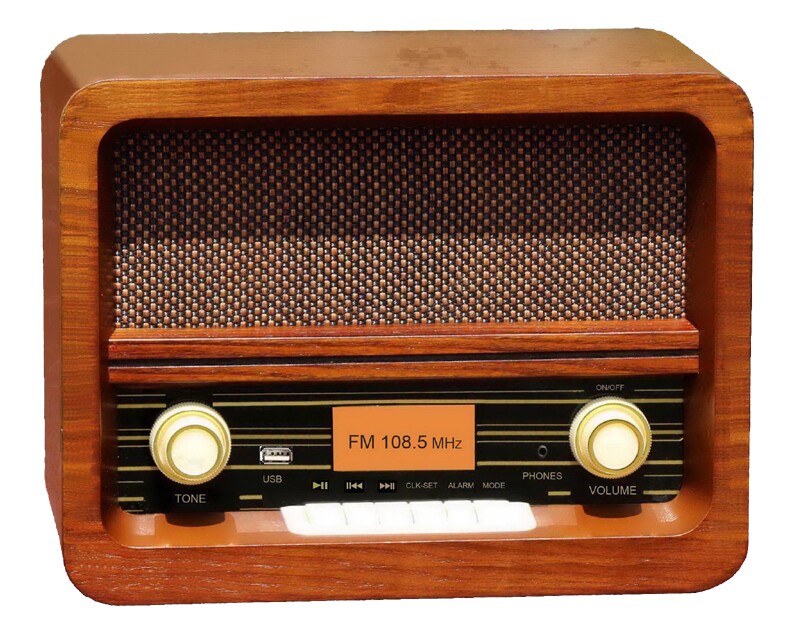“The true function of journalism is to educate the public mind, not to stock the public mind with wanted and unwanted impressions. A journalist has, therefore, to use his discretion, as to what to report and when” (Mahatma Gandhi).

From time and again, journalists are informed to solely ‘report’ what happened and when it happened. However, one does realize that Gandhi’s vision of journalism to ‘educate the public mind’ has taken a completely different outlook in the present times. Not only has the media emerged into a multitude of forms, but has also started participating in political mobilization and impression creation in a way it never did before. While earlier the message that was transferred via communication channels was independent in form, in the current scenario, it has become tainted by the media channels through which it is broadcasted or podcasted. The state of Indian journalism today does fall in line with the prophetic statement of Marshall McLuhan given in 1960s, “Medium is message”.
India has come a long way from the year 1927, when the Indian Broadcasting Channel (IBC) began its first regular radio service in Bombay (present day Mumbai). Since then not only have the Indian citizens seen the marked shift in the way the media is being employed, but even the political leaders have started appropriating these forms of media for transmission of political ideologies and messages. While earlier, campaigning and rally conduction served as the most frequent means of political mobilization during elections in India, now, even the internet and television have dreadfully entered into picture. Interestingly, till about 1940s, the political mobilization was more or less limited to the election season with only radio and newspaper serving as communicative means. However, today, people are completely surrounded by debates about social media influences on public opinion and this form of political mobilization merely doesn’t function during the elections, but even after that.
The Prime Minister of India, Narendra Modi has appropriated one of the earliest forms of communication –radio –to engage in a series of talks on issues of social, economic and national significance called, “Mann Ki Baat”. This attempt at political mobilization and impression creation began in October, 2014 as a medium to transmit political messages. However, certain aspects of such fabricated motive seem extremely problematic. One, is of course, the name. As the name suggests, ‘Mann Ki Baat’ has a slightly emotional appeal, wherein there is an obvious intent to connect to his audience. His constant attempt to link his identity to the fellow farmers or the common citizens of the country is also embodied in an act of rapport formation. The name also rejects the political ideologies and opinions of the citizens, because at the end of the day, it is the Prime Minister’s “Mann Ki Baat” transmitted in a pretty one-way form of communication. This ‘Mann Ki Baat’ thereby, presents itself as a substitute for the actual Parliamentary proceedings.

Therefore, one can say that Narendra Modi has secured his place in the digital world of social media, radio, television, etc. thereby, completely moving away from the real world of public proceedings. Such an alternative refuge can be seen as falling in line with his previous acts of avoiding press conferences. The constant mockery directed by him at the former Prime Minister, Dr. Manmohan Singh explicitly referring to him as “Maun (muted) Mohan Singh” seems to backfire him in the present scenario. The reasons as to why All India Radio (AIR) has been employed by him for such transmission becomes explicit, even though his claims lie in the idea of it being the only form of communication accessible to all people living in all regions of India. However, one can understand the politics behind such a methodology, notwithstanding the fact that it is aired on all stations, in all regional languages of the country.
However, what also become important are the reasons as to why such forms of political mobilization have gained significance today. For the 58.8% of the subjects who liked the show ‘Mann Ki Baat’ (as depicted by a research conducted by Aditya Pramod Gandhi in “Mann Ki Baat -Present and Future), it becomes important to analyze why such a broadcast has affected citizens so deeply than ever before.
A close parallel can be drawn between Narendra Modi’s ‘Mann Ki Baat’ and the former US President, Franklin Roosevelt’s “Fire Side Chat”. “Fire Side Chat” became an important medium for Roosevelt to convey his public policies to the American population in an uncorrupted form, especially as most of the newspapers in 1930s were under stringent hegemonic control by his opponents. Narendra Modi’s “Mann Ki Baat” seems to be influenced by that American idea. However, interestingly, the scenario is a bit different here when compared to the American times of the 1930s. Today, in India, Narendra Modi enjoys a lot of power. Most of the media houses are hardly controlled by his opponents. There is much space for the Prime Minister for impression creation and even more space to exploit the realms of media such as Twitter, television, etc. Therefore, in such a scenario, where people have already given themselves to his ideas, ‘Mann Ki Baat’ acts as an additional tool of political mobilization.
One also finds employment of a sort of evasive strategy when it comes to the issues that are talked about through ‘Mann Ki Baat’. Certain policies and issues are reiterated, such as the Swachh Bharat Mission, nationalism and the idea of nationhood, terrorism and the plight of farmers in India. These issues are given prominence while some relevant and challenging issues like the dreadful state of the employment sector in India, a complete lapse of the Indian economy, the anxiety about the future of the youth in the country, corruption, the environmental concerns and so on are conveniently kept at bay. This is something that has also been voiced out by the viewers/listeners of “Mann Ki Baat” in a feedback collected by the AIR (with a sample size of 50 participants, equally distributed along the lines of rural and urban areas).

While one does understand that radio is being used as an important tool of political mobilization in India right now, it is important to realize that it is not the only one being deployed. In the past 20 years, social media has experienced a sudden upsurge of debates. While Facebook and Instagram are being used significantly, Twitter is being used as a regular medium for transmission of the ‘official word’ by the politicians. Twitter therefore, also acts as a mode of political mobilization. However, Twitter’s latest ban on the political advertisements can give way to a fair manner of political mobilization just as its CEO Jack Dorsey stated, “We believe political message reach should be earned, not bought”. In fact, TikTok was the first important social media platform to put a complete ban on political advertisements. However, it seems as if Facebook is still quite unwilling to take part in such a practice.
We do realize that times have changed. This isn’t the age of Doordarshan, but an age of Netflix. It isn’t the age where newspapers are the only means of information, it’s an age intermeshed with newspapers, periodicals, magazines, social media platforms, television and radio. So, in this present technology-driven age, appropriating older forms of communication to mix it with the newer ones in order to transmit political messages is definitely a novel approach, and definitely a successful one as far as one’s possibility of being re-elected is concerned. The criticism directed at “Mann Ki Baat” is valid, notwithstanding the fact that the vision of ‘digital India’ is held from the beginning to the last; from Narendra Modi’s initial launch of ‘Vande Gujarat’, his efforts at reading 200 mails per day, his launch of ‘NAMO TV’ to his present employment of digital media points out to his maintaining of his vision. If nothing, at least, the effort can well be appreciated.
Author: Riya Mohan

